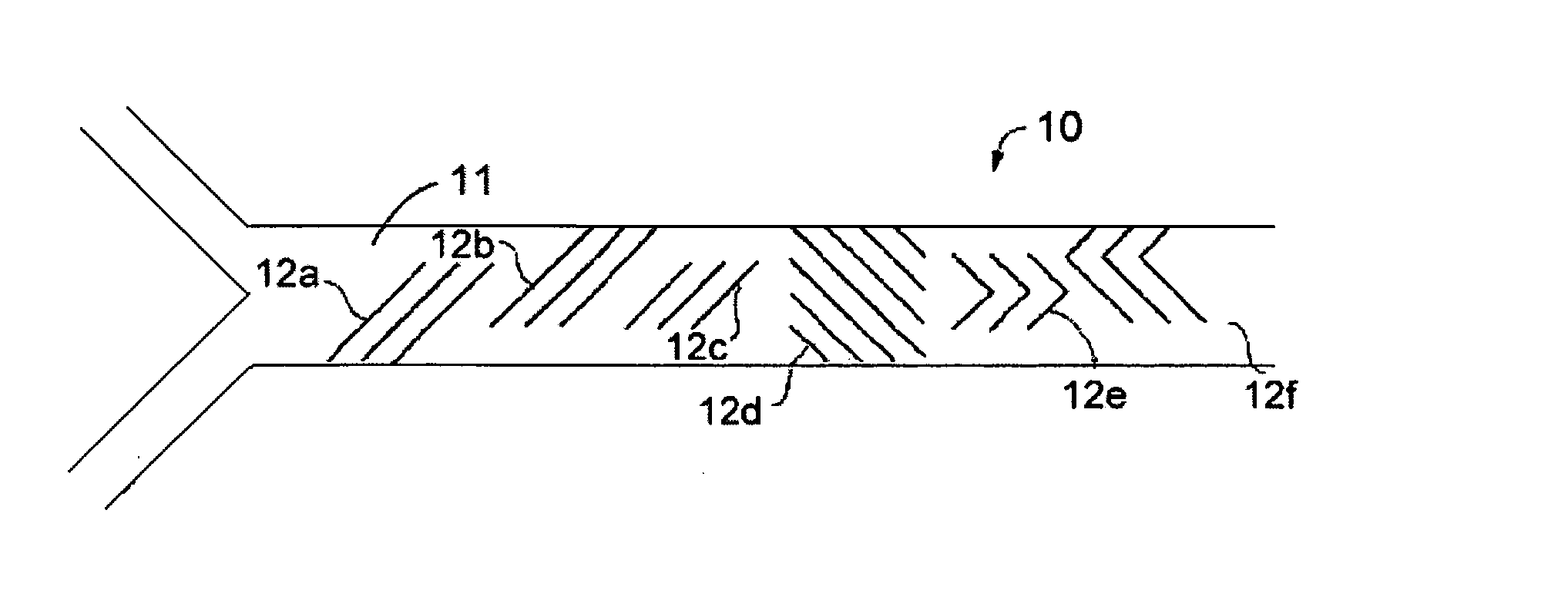Twin-vortex micromixer for enforced mass exchange
a micromixer and micro-vortex technology, applied in the field of passive micromixers, can solve the problems of difficult control of concentration gradients, no more work in microscopic laminar flow systems, and challenges for micromixers to fa
- Summary
- Abstract
- Description
- Claims
- Application Information
AI Technical Summary
Benefits of technology
Problems solved by technology
Method used
Image
Examples
Embodiment Construction
[0022] The present invention proposes a micromixer for enforced mass exchange. Refer to FIG. 3 a diagram schematically showing a preferred embodiment of the present invention. The mass-exchange-enforcing micromixer 30 comprises: a left inlet 31a, a right inlet 31b, a mixing chamber 37, and an outlet 34. At least two fluids enter into the mixing chamber 37 of the micromixer 30 via the left inlet 31a and the right inlet 31b respectively. The fluids are uniformly mixed in the mixing chamber 37, and then, the uniformly mixed fluids leave the micromixer 30 via the outlet 34. On at least one wall of the mixing chamber 37, such as the bottom wall, a lithographic process is exerted to form the grooves 33, which are sunk in the wall by at least tens to hundreds of microns and inclined to the main flow direction by some degrees. The grooves 33 may be simple slanted trenches or lying-V-shape trenches on the surface of the bottom wall. When the fluids flow through the grooves 33, the transverse...
PUM
 Login to View More
Login to View More Abstract
Description
Claims
Application Information
 Login to View More
Login to View More - R&D
- Intellectual Property
- Life Sciences
- Materials
- Tech Scout
- Unparalleled Data Quality
- Higher Quality Content
- 60% Fewer Hallucinations
Browse by: Latest US Patents, China's latest patents, Technical Efficacy Thesaurus, Application Domain, Technology Topic, Popular Technical Reports.
© 2025 PatSnap. All rights reserved.Legal|Privacy policy|Modern Slavery Act Transparency Statement|Sitemap|About US| Contact US: help@patsnap.com



